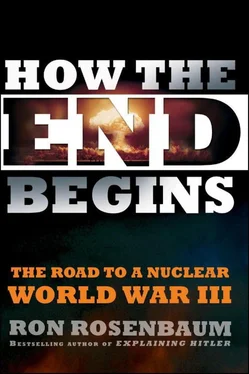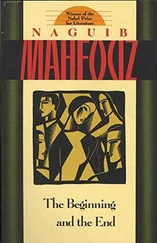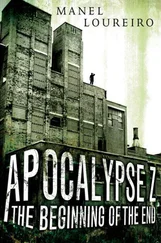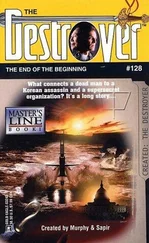Ellsberg was dangerous because he had been on the inside, all the way inside, before he stepped out of bounds with the Pentagon Papers. He would eventually sum up his studies in the art of nuclear blackmail in a RAND paper called “The Theory and Practice of Blackmail.” [126]He had specialized at RAND in the arcane but extremely vital growth area in nuclear war studies: command and control. He had begun to notice that, while our ability to precisely carry out nuclear war orders looked good on paper, chaos lay just beneath the surface.
He had been inside the Pentagon planning rooms where they had argued over how many megatons to deploy against Moscow and how many were needed to vaporize Murmansk. He had been a junior member of the Ex-comm, the Executive Committee that made the Cuban Missile Crisis decisions, and had seen at close, all too close at hand, a Third World War nearly begin. [127]He was a nuclear elite initiate. He had seen the SIOP, the Single Integrated Operations Plan, our targeting plan for nuclear war. He had virtually written the template for it during the time he served in the Pentagon of Secretary of Defense Robert McNamara, and then briefly in Henry Kissinger’s National Security Council apparatus.
Those who actually knew what the SIOP was—and what was in it—were like a high priesthood into whose custody was placed the unholy ark of our nuclear cult. They were the only ones allowed to gaze at its virtually radioactive glow.
The nuclear priesthood is one of those cults it is dangerous to betray. The Rosenbergs were, little doubt, spies. But it is likely the Rosenbergs were only given the death penalty because the secrets they passed on—primitive thirdhand versions of secrets—were atomic. Ellsberg’s secrets were firsthand, created through his own work. He could have given them to the Russians as Nixon feared. Or, as with the Pentagon Papers, he could have given them to the whole world and, in doing so, shook the delicate balance of terror to its foundations by forcing us to face the Number.
Years before my breakfast with Ellsberg, I too had a close encounter with the SIOP of a different sort. [128]At the height of the Cold War during my odyssey through the subterranean world of the bomb, my Air Force escort, Lieutenant Loki (yes, I know, Loki is the Norse god of mischief), had actually led me down to the computer room where the SIOP hummed away in daily digital battle with its eternal foe, RSIOP, the Russian Single Integrated Operations Plan, or at least the one we imagined the Soviets had devised.
The SIOP computer was a huge object, the size of a big oil heater. My escort was a little puzzled when I asked if I could put my hand on top of it. I felt a little foolish, but in some primal way I wanted to put myself in touch with nuclear war. I could have sworn I felt a subtle vibration and a faint warmth to the touch, a warmth I imagined from an array of vacuum tubes that glowed as its innards pitted the nuclear powers against each other in war games in which, I was told, variations of the “targeting menus” of the SIOP were fitted in various crisis configurations against variations in the targeting menus imagined for the RSIOP, the Red foe. It was nothing like the operational closeness, the planning of the World War IIIs within—that Ellsberg felt. But I found some kind of numinous high-tech dread communicated by the touch that perhaps bore some relation to his.
Initially there was only one targeting plan in the SIOP, according to Ellsberg. [129]But by the time McNamara and his successors were through, by the time I got to the SIOP in 1977, there were many more options—more “flexible responses,” more differential target menus for limited or escalated single or multi-site war plans.
So why didn’t Ellsberg tell all he knew about the SIOP back then? That question still haunts him—and drives him—now.
I don’t think it was fear of the Rosenbergs’ fate that prevented Ellsberg from revealing what he knew about the SIOP. When I spoke to him he referred regretfully to that period when he was transferred from nuclear war planning to National Security Council Vietnam policy duty in November 1964. It ultimately led to his revelation of the Pentagon Papers but forced him to lose access and leave contemplation of what he’d grown to believe was the insanity of our nuclear policy behind. He told me he’d thought of exposing our nuclear insanity, but “then got distracted by Vietnam and the papers.” And it’s true he had transferred from nuclear planning to a Vietnam advisory role. But by then he had already learned the Number. He saw it in the first SIOP he was shown at the Pentagon.
And he left the machinery of genocide in place, unshaken, even after learning of it. Sure, he was arrested in later years in antinuclear demonstrations—hundreds of times—but he is an extreme moralist of the John Brown absolutist abolitionist type, burdened with a sense of his own sin in participating in the SIOP system. There is no stricter judge of his own behavior than he. And so there’s a bit of the wandering self-flagellant prophet of doom in him. He told me the story of learning the Number over and over again like a penitent telling one priest after another of a crime that he could never receive absolution for. The Number. Ellsberg knew the Number. He had found out the Number. There may not have been a number until he asked for it. Getting the Number made it—our capability—real.
Kennedy indirectly gave Ellsberg the assignment. Sometime in the first year of his administration, before the Cuban Missile Crisis, he had passed word through McNamara that he wanted to know the number of deaths a U.S. nuclear strike on the Soviet Union would cause according to our then current targeting plans, the ones that accompanied him everywhere in the black briefcase. Specifically, he wanted to know just how many people would die from an all-out U.S. attack alone, not counting the death toll from any retaliation or even from the first strike that might provoke U.S. retaliation. Ellsberg was detailed to get the Number from the Joint Chiefs of Staff. Kennedy had been frustrated by previous attempts to get the Number from the Joint Chiefs.
Ellsberg communicated the president’s impatience through Pentagon official Robert Komer, later to be known during Vietnam as “Blowtorch” Komer for his fiery temper. [130]When Komer got an answer from the Joint Chiefs, it came in the form of a deaths over time chart: it plotted the number who would die in the initial blasts and how that number would rise over the next six weeks from radiation poisoning and radioactive fallout.
Ellsberg showed me the chart over breakfast. There were two lines: initial deaths, 275 million. Adding in deaths over a six-week period, 325 million total. When he asked whether the total would be different under another target plan, he was told there was only one targeting plan: all-out attack. Massive retaliation. Ellsberg says he asked Komer about the deaths in the nations bordering on the Soviet bloc, including China, who would be subject to major fallout, and Komer went back to the Pentagon. Make that 600 million, the Joint Chiefs said.
Or as Ellsberg translated it for me that morning, “one hundred Hitler Holocausts.” Later he learned the Joint Chief’s estimate didn’t figure into their account the inevitable tens even hundreds of millions more deaths from the Hiroshima-like firestorms that follow nuclear detonations. That factor was almost never included in official and unofficial estimates until 2003, when a sobering study of nuclear detonation firestorm death estimates was published by Cornell University Press: Whole World on Fire by Lynn Eden. [131]It demonstrated how previous Pentagon and other official estimates had failed to include these kinds of convulsive and uncontrollable conflagrations. Suddenly, almost without anyone taking notice, nuclear war got worse. Not in reality—it was always that bad—but certainly in the perception of anyone who cared enough to look closely. The whole picture of the magnitude of even a “small” nuclear war changed. We’d been shielded from the full awfulness of the truth, the real number.
Читать дальше











